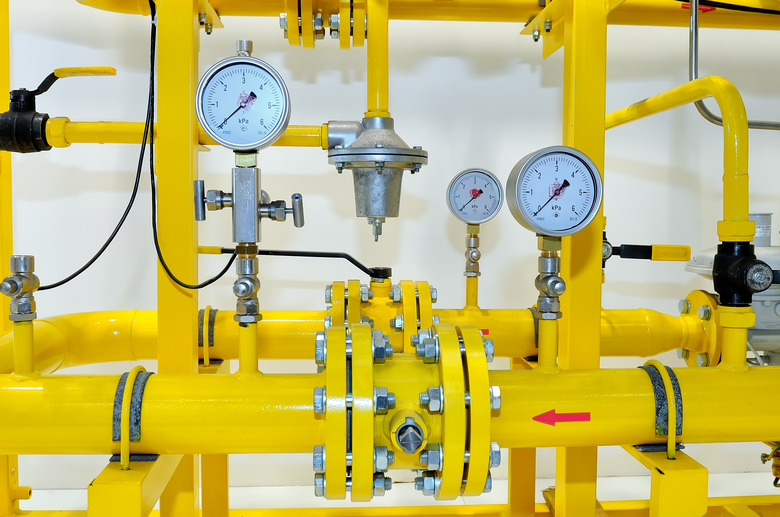How To Calculate mmHg
If you have ever watched a standard weather report on television or checked out the local conditions online, you have seen something called atmospheric pressure (often called barometric pressure because the device used to take these measurements is called a barometer). Often, you're apparently expected to know what this quantity is, and what units like mm Hg mean, without any explanation.
While temperature, precipitation and sunshine are usually the stars of the forecast, the role of pressure is important, too. Drops in atmospheric pressure below the usual value of about 760 mm Hg often herald windy, rainy or otherwise unpleasant conditions, whereas rising atmospheric pressure is typically a harbinger of fair skies to come.
What Is Pressure in Physics?
What Is Pressure in Physics?
Pressure is the amount of force exerted per unit area. Forces come in many forms, but each "kind" takes units of mass times acceleration. Since Earth's gravity accelerates masses toward Earth's center, weight is a force, the standard unit of which is the newton (N).
Air has mass, even though it may not feel like it because the bodies of Earth creatures have evolved to feel the weight of air as no weight at all. Oxygen, nitrogen, carbon dioxide and other gases experience gravity just like anything else with mass does, even individual atoms.
If you assume the air around you is of uniform density, imagine what would happen if you could draw a 1-m by 1-m square on the ground and measure the weight of the air in an imaginary rectangle extending vertically into outer space. This weight, divided by the square's area (1 m2) would give the atmospheric pressure in N/m2 or pascal (Pa).
What Is Atmospheric Pressure?
What Is Atmospheric Pressure?
Think of the "column" of air above of height h, exerting a pressure on an area measuring A square meters (m2) at Earth's surface. From basic geometry, if you double the value of A (the "base" of this very tall, skinny rectangle), you also double the volume of the rectangle. This means twice as much weight and twice the pressure; weight and pressure thus both vary directly with A.
This means that the absolute size of the area over which pressure is measured is irrelevant; you need only know its value and that of the weight of the atmosphere above it. Thus even a tiny system can do the job if set up properly. The setup is an open dish of the dense liquid metal mercury connected to a vertical tube open in the depth of the mercury but vacuum-sealed at the top. The weight of air pushes mercury upward in proportion to air pressure, allowing the latter to be measured.
- The pascal is the SI unit of pressure, but the kilopascal (kPa) is a more convenient unit for pressures in the range of that of Earth's atmosphere.
What Does "mm Hg" Mean?
What Does "mm Hg" Mean?
The device described above is called a mercury barometer. Normally, the weight of the air creates a pressure of 760 mm Hg, a unit also called torr. This means that normal air pressure is sufficient to keep a column of mercury about 30 inches high: (760 mm)(in/25.4 mm) = 29.92 in.
Picture what happens when the air pressure drops. With less weight on the column of mercury, the top of the column will fall to a lower value; conversely, if the weight above the column increases (i.e., the atmospheric pressure rises), then the top of the column will be forced upward as air stubbornly displaces mercury from the dish into the tube aperture.
Converting mm of Hg to Pascal
Converting mm of Hg to Pascal
To calculate the pressure in virtually every conceivable unit given the pressure in any other unit, see the Resources.
- Note that air pressure, like many physical quantities, has a temperature dependence; as molecules move around faster and collide more with increasing temperature, pressure rises.
Cite This Article
MLA
Beck, Kevin. "How To Calculate mmHg" sciencing.com, https://www.sciencing.com/calculate-mmhg-5144203/. 16 February 2020.
APA
Beck, Kevin. (2020, February 16). How To Calculate mmHg. sciencing.com. Retrieved from https://www.sciencing.com/calculate-mmhg-5144203/
Chicago
Beck, Kevin. How To Calculate mmHg last modified March 24, 2022. https://www.sciencing.com/calculate-mmhg-5144203/
